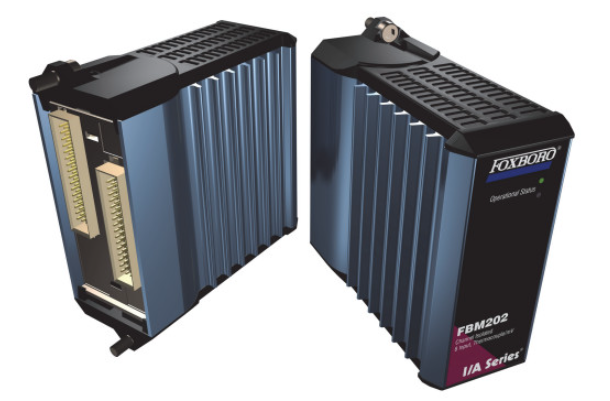We will promote diversified development of biomass energy
Biomass waste mainly includes agricultural waste, forestry waste, organic domestic waste, livestock and poultry manure, domestic sewage sludge and industrial organic waste residues and liquid waste. At present, China's annual output of all kinds of biomass waste is conservatively estimated to exceed 3.5 billion tons. Among them, 960 million tons of agricultural waste, 350 million tons of forestry leftovers, 150 million tons of organic domestic waste, 1.9 billion tons of livestock and poultry manure, 150 million tons of agricultural processing waste, and 40 million tons of sewage sludge. If these wastes are not properly treated, it will not only bring great harm to the environment, society and the physical and mental health of residents, but also the resources contained in them are difficult to be fully recycled. At present, the common practice of all countries is to turn waste into treasure under the premise of harmless and reduced disposal. Generally, it is first used for resource utilization and high value-added utilization, and then for energy utilization of waste that does not have high resource utilization and high value-added utilization conditions.
After decades of development, the biomass energy industry has developed from the inefficient use of biomass such as direct burning of fuelwood and straw in traditional POTS and clay stoves in rural areas to the use of thermochemistry, biochemistry and other means, through a series of advanced conversion technologies, to produce high-grade low-carbon energy such as solid, liquid and gas instead of fossil fuels. Modern biomass energy that provides electricity, transportation fuel, heat energy, gas and other terminal energy products for human production and life.
The development of biomass energy has multiple implications.
This is an important starting point to help achieve the goal of "double carbon". In the future, biomass energy from a wide range of sources will continue to contribute to the promotion of peak carbon neutrality in various fields by virtue of its characteristics. The "3060 zero-carbon biomass energy Development Potential Blue Book" predicts that China's carbon emissions peak at about 11 billion tons, while the future carbon reduction potential of biomass energy will reach 2 billion tons, and the carbon reduction potential is huge.

This is an effective way to reduce pollution and carbon at county level. The construction of biomass non-electric distributed energy stations such as biomass clean heating and biological natural gas can provide clean energy for the county. At the same time, the non-electric utilization of biomass can solve the environmental pollution problems caused by livestock and poultry manure, crop straw open burning, and various agricultural and forestry wastes.
This is an important means to promote rural revitalization. The development of biomass energy industry can effectively build a green and low-carbon circular development system of "agriculture - energy - environmental protection - agriculture", cultivate new ways, new formats and new momentum of green and low-carbon circular development at county level, and promote farmers to increase income and get rich.
After the outbreak of the global oil crisis in the 1970s, clean energy represented by biomass energy has received worldwide attention. Especially in developed countries, biomass energy has been given an important energy strategic positioning.
In terms of global biomass energy development, the United States, Brazil, Germany and other countries have a rapid development process. By 2020, the installed capacity of biomass power generation in the United States is about 16 million kilowatts, generating 64 billion kilowatt-hours, and its fuel ethanol production accounts for about 50% of the global output and biodiesel production accounts for 14% of the global output. Brazil biomass power generation capacity of about 14.7 million kilowatts, generating 54 billion KWH, Brazil is also a fuel ethanol production country, sugar cane is its main fuel ethanol production raw materials; Germany pays attention to the development of biogas resources, and the installed capacity of biogas power generation is about 5 million kilowatts, generating about 33 billion KWH.
In Europe, especially in the Nordic countries, biomass heating has become the main source of district heating. In Sweden, there are more than 100,000 large, small and medium-sized biomass heating stations in the country, most of which use the cogeneration model, the thermal efficiency is usually above 80%, and the national biomass heating volume accounts for more than 70% of its total heating market. Biomass energy is the most important and largest renewable energy source in Denmark, and 32% of all heat consumption in Denmark in 2018 was provided by biomass energy, and by 2030, biomass heating will account for more than half of all heat supply in Denmark. In Finland, biomass energy accounts for 30% of the total energy, and in the use of various renewable energy sources, bioenergy accounts for the largest proportion, about 82%.
As countries intensify efforts to combat climate change, bioenergy will become an important means of decarbonizing many sectors that are difficult to electrify. Heating, cement, steel and other industries can use biomass solid fuel, biological gas to replace coal and other fossil fuels; Marine industry can use biological natural gas, biological methanol to replace the current heavy oil; The aviation industry can use bio-jet coal (sustainable aviation fuel) instead of fossil jet fuel. In the future, the biomass energy industry will develop in the direction of diversified utilization and high value-added.
China's biomass energy industry has begun to take shape
Ren Dongming (Research Fellow, Renewable Energy Development Center, Energy Research Institute, Chinese Academy of Macroeconomic Research) : Overall, China's development of biomass energy has a variety of advantages, which can be summarized in four aspects.
First, the variety is complete and widely distributed. China's biomass energy resources can be roughly divided into three categories. First, agricultural and forestry residues, including crop residues, agricultural product processing residues, and forestry residues. Among them, forestry residues include cutting residues, forest tending residues, wood manufacturing residues and wood processing residues. The second is organic waste, including urban domestic waste, domestic and industrial organic sewage, industrial organic waste, livestock and poultry manure. The third is energy crops, including sugar, starch, fiber and oil and other energy crops. China's biomass energy resources are not only complete, but also widely distributed throughout the country, which is convenient for local collection, processing and energy utilization.
Second, the amount of resources is huge. China is a large agricultural country, straw resources produce a large amount. According to the "National Crop Straw Comprehensive Utilization Report" issued by the Ministry of Agriculture and Rural Affairs, in recent years, China's grain production has a good harvest, and at the same time, crop straw production has increased year by year. In 2021, the national straw production will be 865 million tons, an increase of more than 35 million tons over 2018. The straw production of corn, rice and wheat reached 321 million tons, 222 million tons and 179 million tons respectively, accounting for 83.5% of the total. In addition to rich straw resources, China has 170 million tons of standard coal forestry leftovers, 0.3 million tons of standard coal domestic waste and 0.6 million tons of standard coal other organic waste resources for development and utilization every year.
Third, a relatively complete industrial system has been established. China has an independent and complete engineering design and equipment manufacturing capacity in agricultural and forestry biomass power generation and waste incineration power generation, and has established a relatively perfect standard system. The key technology systems including biomass power generation, biomass heating, molding fuel processing and anaerobic fermentation have been initially established. In the biomass boiler, forming machinery and fermentation equipment and other key equipment manufacturing has independent research and development and commercial production capacity.

Fourth, it has a relatively complete policy support system. In 2006, China officially implemented the Renewable Energy Law, which clearly included biomass energy in the scope of legislative regulation, and the development and utilization of biomass energy has legislative protection. In 2007, China promulgated the "Medium - and Long-Term Development Plan for Renewable Energy", which put forward clear large-scale development goals for biomass power generation, fuel ethanol, biodiesel, and biomass solid molding fuel. In 2010, China issued the benchmark on-grid price of 0.75 yuan per KWH for agricultural and forestry biomass power generation projects (direct combustion power generation); In 2012, the benchmark on-grid electricity price for waste incineration power generation was issued at 0.65 yuan per KWH, making biomass power generation secure a stable market price guarantee. In 2021, the "Action Plan for Achieving Carbon Peak before 2030" issued by The State Council proposed to focus on the implementation of the "Ten actions for achieving carbon peak", and clearly proposed to accelerate the application of renewable energy such as biomass energy and solar energy in agricultural production and rural life. In 2022, the "14th Five-Year Plan for Renewable Energy Development" once again emphasizes the steady development of biomass power generation, the active development of biomass clean heating, the accelerated development of biological natural gas and the vigorous development of non-food biomass liquid fuels. China's policy system framework to support the development of the biomass energy industry has basically taken shape.
With the support of various relevant policies, after years of development, China's biomass energy industry has begun to take shape. Biomass energy has developed steadily in the field of power generation, and by the end of 2021, the cumulative installed capacity of biomass power generation has reached 37.98 million kilowatts, generating 163.7 billion kilowatt-hours. Among them, agricultural and forestry biomass power generation capacity of 15.59 million kilowatts, generating 51.6 billion KWH; Garbage incineration power generation capacity of 21.29 million kilowatts, generating 108.4 billion KWH; The installed capacity of biogas power generation is 1.11 million kilowatts, generating 3.7 billion KWH. In addition to power generation, other biomass energy industries are also developing rapidly. By the end of 2021, China's biomass energy clean heating area of more than 300 million square meters, biomass energy molding fuel output of 22 million tons, fuel ethanol output of 2.9 million tons, biodiesel output of 1.2 million tons.
At the same time, biomass energy has advantages that renewable energy sources such as wind and solar power do not have. First, it can be converted into various forms of energy, which can supply power, heat, gas (biogas, biological natural gas, biological hydrogen, etc.), provide liquid fuel (bioethanol, biodiesel, aviation kerosene) and solid molding fuel. Second, it has the characteristics of natural carbon neutrality, the formation of biomass itself is a process of carbon fixation, so the development and utilization of biomass energy does not increase carbon dioxide in the atmosphere. Third, biomass power generation can become a stable power supply, the average annual power generation hours can reach more than 7,000 hours, much higher than the photovoltaic power generation of more than 1,000 hours and wind power of more than 2,000 hours, and biomass power generation than photovoltaic power generation and wind power is more stable, the future can replace coal power to a certain extent as a supporting power supply, providing base load for the power system.
Looking forward to the future, with the continuous promotion of the "dual carbon" strategy and the adjustment of the energy structure, China's biomass energy industry will enter a stage of high-quality development, and gradually form a diversified development pattern of electricity, heat, gas and liquid fuels. It plays an irreplaceable role in the treatment of agricultural and forestry waste and urban and rural organic waste, reducing urban and rural environmental pollution, promoting energy transformation, helping rural revitalization, and building a beautiful China.
The prospect of biogas is not to be underestimated
Li Jingming (Secretary General of China Biogas Society, first Chief expert of Agroecology and Resource Protection Station of Ministry of Agriculture and Rural Affairs) : According to the national standards issued by the State Administration of Market Supervision and Administration and the National Standardization Administration, biological natural gas is a combustible gas mainly containing methane produced by thermochemical conversion or biochemical conversion of biomass as raw materials, and a renewable natural gas mainly containing methane components produced by purification or methanation process. The combustible gases mentioned here mainly include biogas, biomass pyrolysis gas, landfill gas, etc., of which biogas is the most direct, easiest and most stable upstream product.
Biological gas has been developed in our country for many years. Since 2015, with the consent of The State Council, the National Development and Reform Commission and the Ministry of Agriculture and Rural Affairs have used the central budget funds for three consecutive years, with an annual investment of 2 billion yuan, to organize the rural biogas transformation and upgrading pilot demonstration projects nationwide, and have supported the construction of more than 1,400 large-scale biogas projects and 64 large-scale biogas pilot projects. In December 2016, the 14th meeting of the Central Financial and Economic Leading Group clearly put forward "two directions" for the treatment and resource utilization of livestock and poultry manure, that is, "biogas and biological gas are the main treatment direction, and on-site use of rural energy and agricultural organic fertilizers is the main use direction."

In 2017, The General Office of the State Council issued the Opinions on Accelerating the Resource Utilization of Livestock and Poultry Breeding Waste, and in 2019, the National Development and Reform Commission and other departments jointly issued the Guiding Opinions on Promoting the Development of Bio-Natural gas Industrialization. In the demonstration projects promoted by the Ministry of Agriculture and Rural Affairs in the whole county, such as the resource utilization of livestock and poultry manure, the replacement of chemical fertilizers by organic fertilizers, and the comprehensive utilization of crop straw, biogas and biological gas are regarded as important technical means. Under the guidance of relevant national policies, leading enterprises in the industry have joined the ranks of investment, construction and operation and maintenance of biological gas projects.
In the process of construction and operation, all localities adhere to the construction of biological natural gas projects as an important starting point to promote the utilization of agricultural, rural and urban organic waste resources, the development of ecological circular agriculture, and the construction of beautiful villages, achieving good results, and accumulating some valuable and reproducable mature technology models and successful experience.
Introduce preferential policies. Relevant departments of finance, agriculture, environmental protection, land, taxation, electric power, finance and other localities strengthened coordination and cooperation, actively introduced supporting policies, and jointly promoted the construction and operation of the project. The People's Government of Dali City in Yunnan Province approved the construction of six bio-gas filling stations by Shunfeng Erhai Bio-Gas Company, and 200 bio-gas taxis have been put into operation.
Realize the resource utilization of organic waste. In accordance with the requirements of green development, all localities use biological natural gas projects as a link to make comprehensive utilization of various organic wastes, reducing environmental pollution and alleviating the problem of "dirty and bad" in urban and rural areas. Hainan Chengmai Bio-natural gas Project, annual treatment of various types of urban and rural organic waste more than 200,000 tons, an annual output of 10 million cubic meters of bio-natural gas, nearly 50,000 tons of various types of marsh fertilizer, has become an important local organic waste resource utilization center.
Expand clean energy supply channels. Although biological natural gas is still in the pilot demonstration stage, it has achieved initial results in civil gas and vehicle gas, and has gradually become an important way to ease the pressure on domestic natural gas supply. Since the Henan Tianguan Group's biogas project was put into operation in January 2019, millions of cubic meters of biogas have been transported to urban gas pipelines, which has made beneficial exploration in the development of centralized gas supply in small and medium-sized cities.
We will promote regional development of ecological and circular agriculture. Biogas projects are connected to culture and promote planting. Biogas slurry as organic fertilizer can effectively replace chemical fertilizer, improve the quality of agricultural products, promote green organic production, and achieve cost saving and efficiency increase in agriculture. Yunnan Shunfeng Erhai bio-natural gas project supporting 4 organic fertilizer plants, promote organic planting, research and development of dozens of varieties of organic fertilizer, the annual production of solid organic fertilizer 169,000 tons, liquid organic fertilizer 132,000 tons.

We will promote the development of the whole industrial chain. From raw material collection, storage and transportation, project operation and management, commodity organic fertilizer processing and sales, high-value utilization of biogas, to the construction of ecological circular agriculture demonstration zones, a relatively complete industrial chain has been created, and the integrated development of the first, second and third industries has been promoted. Hunan Yueyang Bio-natural gas project has formed an agricultural circular economy industry integrating raw material distribution, energy utilization, green planting and ecological breeding through the establishment of third-party service agencies.
Innovative transport management mechanisms. Through the guidance of central financial funds, we have leveraged social capital to enter, attracted some strong enterprises to become the main body of project construction and operation, explored many new operating mechanisms, and cultivated a number of third-party transport and management construction enterprises. Relying on Jing 'an Company, Hebei Province established a third-party hosting operation company, established a standardized construction and professional management model, and improved the efficiency of project construction and operation.
Upgrade the level of technology and equipment. Many projects are designed and constructed in strict accordance with technical standards and specifications, using advanced technical process routes and instruments and equipment, as well as intelligent monitoring systems, skid-mounted compression and purification equipment, making fermentation more efficient, more refined management, and greatly improving sustainable operation capacity. Bio-natural gas projects such as Shandong Minhe and Shanxi Shenmu introduced advanced German fermentation equipment and biogas purification equipment, which greatly improved the production capacity.
- EMERSON
- Honeywell
- CTI
- Rolls-Royce
- General Electric
- Woodward
- Yaskawa
- xYCOM
- Motorola
- Siemens
- Rockwell
- ABB
- B&R
- HIMA
- Construction site
- electricity
- Automobile market
- PLC
- DCS
- Motor drivers
- VSD
- Implications
- cement
- CO2
- CEM
- methane
- Artificial intelligence
- Titanic
- Solar energy
- Hydrogen fuel cell
- Hydrogen and fuel cells
- Hydrogen and oxygen fuel cells
- tyre
- Chemical fiber
- dynamo
- corpuscle
- Pulp and paper
- printing
- fossil
- FANUC
- Food and beverage
- Life science
- Sewage treatment
- Personal care
- electricity
- boats
- infrastructure
- Automobile industry
- metallurgy
- Nuclear power generation
- Geothermal power generation
- Water and wastewater
- Infrastructure construction
- Mine hazard
- steel
- papermaking
- Natural gas industry
- Infrastructure construction
- Power and energy
- Rubber and plastic
- Renewable energy
- pharmacy
- mining
- Plastic industry
- Schneider
- Kongsberg
- NI
- Wind energy
- International petroleum
- International new energy network
- gas
- WATLOW
- ProSoft
- SEW
- wind
- ADVANCED
- Reliance
- YOKOGAWA
- TRICONEX
- FOXBORO
- METSO
- MAN
- Advantest
- ADVANCED
- ALSTOM
- Control Wave
- AB
- AMAT
- STUDER
- KONGSBERG
- MOTOROLA
- DANAHER MOTION
- Bently
- Galil
- EATON
- MOLEX
- Triconex
- DEIF
- B&W
- ZYGO
- Aerotech
- DANFOSS
- KOLLMORGEN
- Beijer
- Endress+Hauser
- MOOG
- KB
- Moxa
- Rexroth
- YAMAHA
- Johnson
- Westinghouse
- WAGO
- TOSHIBA
- TEKTRONIX


Email:wang@kongjiangauto.com



































































































































